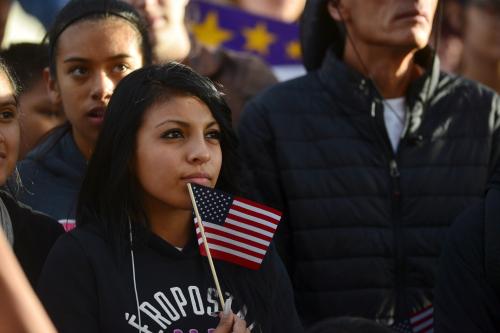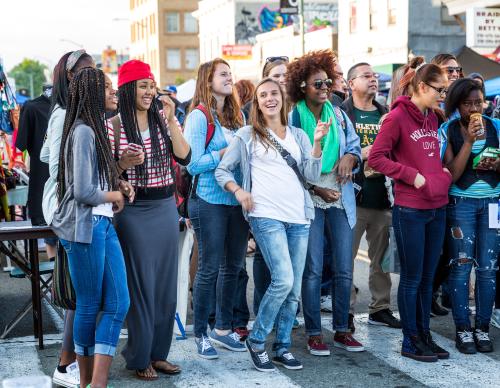 In the late-night and early-morning hours of August 15 and August 16, 2017, crews in Baltimore removed four Confederate-linked monuments across the city. The sight of tiki torch-wielding neo-Nazis marching through Charlottesville, Va. only three days before stirred Baltimore Mayor Catherine Pugh and city leaders to act decisively on an issue they had debated for several years. The monuments were hoisted from public display and onto trucks headed to an undisclosed location.
In the late-night and early-morning hours of August 15 and August 16, 2017, crews in Baltimore removed four Confederate-linked monuments across the city. The sight of tiki torch-wielding neo-Nazis marching through Charlottesville, Va. only three days before stirred Baltimore Mayor Catherine Pugh and city leaders to act decisively on an issue they had debated for several years. The monuments were hoisted from public display and onto trucks headed to an undisclosed location.
Baltimore wasn’t the only city to act boldly in Charlottesville’s aftermath. Leaders in cities including Lexington, Ky.; Kansas City; and Austin removed or relocated Confederate statues and memorials. Other city leaders condemned the rally and espoused the importance of diversity in their communities. Over 300 mayors signed a compact organized by the U.S. Conference of Mayors and the Anti-Defamation League outlining a new effort “to fight extremism and bigotry and to promote the fundamental principles of justice and equality that define America.”
These were important first steps, a public display of moral leadership that rebuked the moral equivalence emanating from the White House.
Yet city leaders need to go further than issuing statements and removing monuments. They need to recommit to addressing deep, structural barriers that hold their residents and communities back, which have roots in the complicated racial histories of their own cities.
Racism has fundamentally shaped the social and economic landscape of U.S. cities. In northern cities like Chicago, violent riots and intimidation greeted African-Americans seeking to move into white neighborhoods during the Great Migration, helping produce what the historian Arnold Hirsch has called a “second ghetto” of entrenched poverty in the city’s public housing towers. In cities like Detroit, African-Americans also faced widespread labor market discrimination, relegated to less-desirable, lower-paying jobs. Meanwhile, in Southern cities, federal power enforced civil and voting rights over the objections of segregationist local officials, literally opening the doors to school integration in cities like Little Rock and New Orleans.
Real estate practices like contract-selling, block-busting, red-lining, and exclusionary zoning that took shape in mid-century U.S. cities are inextricably linked with continued barriers to opportunity for African-Americans today. Particularly in the nation’s older industrial cities, African-Americans remain disproportionately concentrated in poor neighborhoods and resigned to lower-paying occupations. For every $100 in white family wealth, black families hold just $5. In many large urban communities, thousands—if not tens of thousands–of African-American men are incarcerated. Even when African-Americans become rich, their sons—in particular—struggle to retain that status.
In just the last year since Charlottesville, cities have unveiled or expanded a range of programs to make their places more inclusive, including broadening access to internships, launching city offices focused on equity, and trying to improve integration in city schools. In Chicago, civic leaders are trying to reduce the power of “aldermanic prerogative,” which has allowed local officials to limit affordable housing. Tightening labor markets have prompted some businesses and economic development leaders to invest in helping a broader array of potential workers get hired, although even in a growing economy, gains for African-Americans still trail those of whites.
While valuable, these efforts also point to the importance of seeking solutions that go beyond new initiatives and programs. Today’s city leaders have inherited entire systems of local governance built on a foundation of racial exclusion. As one civic leader in Cleveland explained recently, strong protections against racial discrimination have existed for only 22 percent of America’s 230-year history. Public, private, and civic sector leaders must continuously examine and challenges the ways in which we plan, finance, and govern our cities to ensure that they are racially inclusive.
As former New Orleans mayor Mitch Landrieu memorably argues, Confederate statues were created as political weapons, part of an effort to hide the truth that the Confederacy was on the wrong side of history and humanity. Yet even as more cities belatedly tear those monuments down, their legacy remains in segregation, limited access to opportunity, and continued discrimination. City leaders cannot declare victory at dismantling the symbolism of racism in their communities; they must confront the realities of race and opportunity in order to prepare their citizens for a better future.








Commentary
A year after Charlottesville: Once the monuments are gone, the hard work begins for cities
August 8, 2018